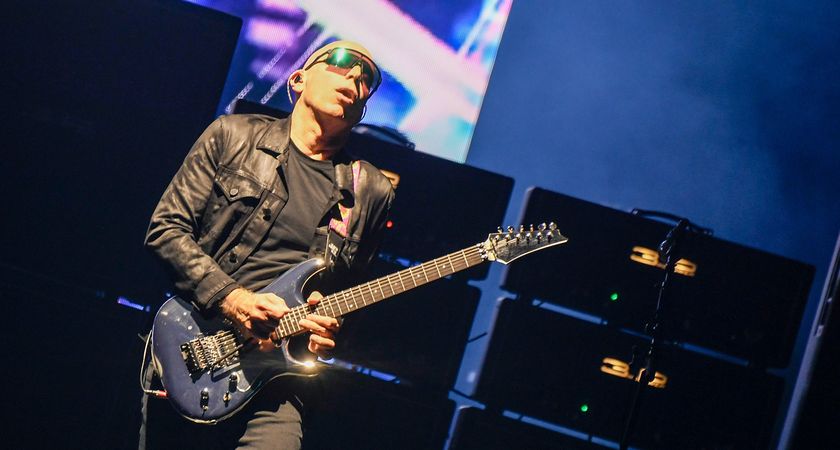“The neck is essentially twice the thickness of many standard necks. It was like, ‘Let’s see how big we can go – let’s go for a record-breaker’”: The making of Phil Collen’s monster new Jackson Tele-style
Jackson Master Builder Joe Williams shines a light on the process behind the Def Leppard guitarist’s prototype Jackson T-style, which may well enter production as a future signature model…
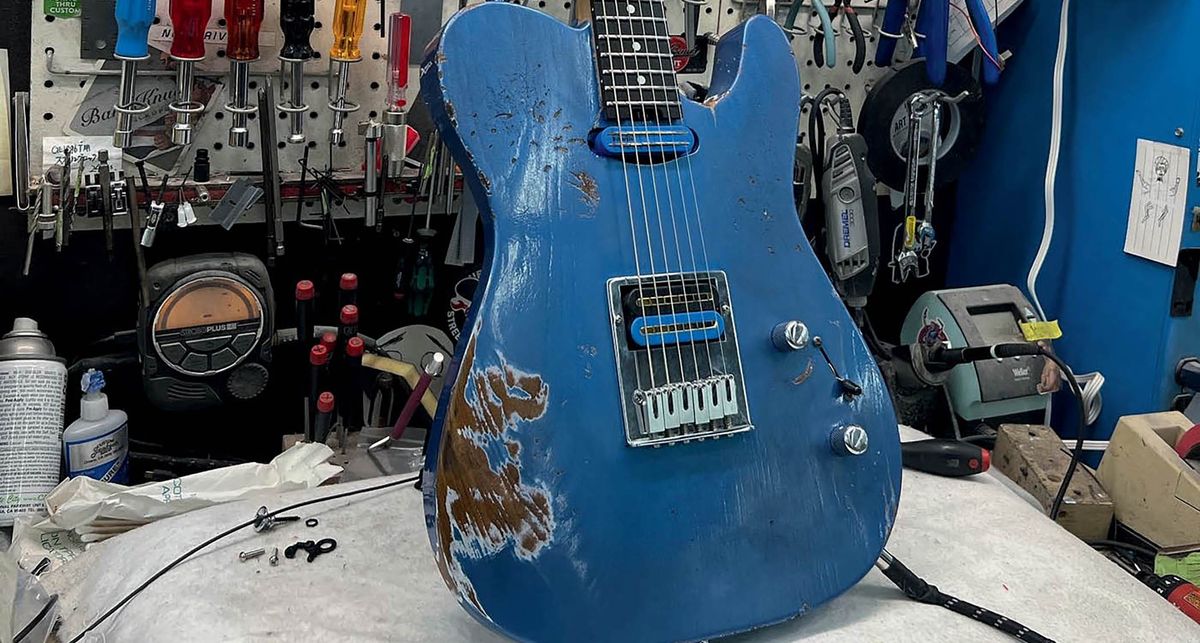
In our recent interview with Phil Collen, the Def Leppard stalwart waxed lyrical about the enduring appeal of Pyromania, working with Tom Morello, and most intriguingly, his custom Jackson Tele-type, which he has dubbed his “new favourite guitar”.
The model is most notable for having “the fattest neck Jackson has ever made”. With that in mind, we sought out Jackson Master Builder Joe Williams to get the lowdown on the building of the guitar – and how that enormous neck came to be…
Phil isn’t known for T-style guitars, so what brought this on?
“He had an old Fender Telecaster he brought in and [master builder] Mike Shannon had made a new neck for him because he wanted it a little bigger and fatter like other necks he liked. I did that for him a while back, but he wanted to venture into something new.
“[This build] had been on the books for a while and Phil was very patient; he must have had the order together for a year. It started out as a roasted two-piece body, but I went with a one-piece ash body. Phil is about sustainability, and whenever we do one we try to find ways to get more sustain acoustically. So the one piece of ash helped with that.”
And how about the bridge?
“Originally, Phil wanted a Hipshot, a hardtail with a hard mass directly mounted to the body. We decided to go with a higher-mass bridge that looks more like a traditional Telecaster, which ended up being a Gotoh TB-0031-010 with the pickup mounted inside the bridge itself.”
Get The Pick Newsletter
All the latest guitar news, interviews, lessons, reviews, deals and more, direct to your inbox!
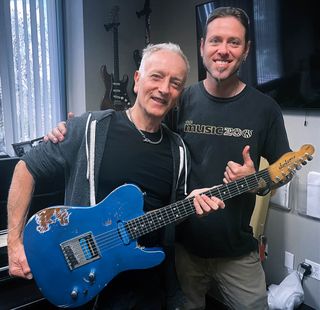
Phil mentioned that this is the largest neck Jackson has made.
“That was one big change, obviously, the giant neck. It was like, ‘Let’s see how big we can go; let’s go for a record-breaker and see if we can hit that ceiling for him’ [laughs]. If we had gone any bigger, it probably would have messed with the balance of the body or caused neck dive, but it didn’t.
The neck is essentially twice the thickness of many standard necks. It is nearly twice as thick
“The neck is essentially twice the thickness of many standard necks. It is nearly twice as thick and feels as such, but is a ¼-inch shy of actually being double. 90 per cent of bolt-on style necks start at one-inch thick stock, so going beyond that took some custom trickery. I didn’t want to volute the neck or make the body thicker than normal, so making the neck functional with the hardware while keeping a traditional look was a fun challenge.”
Considering how big and heavy this guitar is, how does it play?
“If you sit down long enough, you get used to it [laughs]. It’ll throw you off if you’re used to normal, standard Jackson neck specs. But I know that Nocasters have those wider necks, so if anybody is used to those, it’s not such a wild change. The fingerboard plays and feels great; it’s just getting used to that thickness of the neck.”
Did Phil mention why he wanted it so much thicker than typical spec?
“Most of us are taught to put thumbs behind the neck, but Phil hangs his thumb over the neck. He likes not to have that gap between the curve of his hand and the neck; he wants to fill that gap because it makes it more comfortable. I think he gets a little fatigued if he has to clamp the neck to fill the gap. I’ve heard that from other players, too.”
Phil said this is the best-sounding guitar acoustically, and the tuning stability is great
Seeing as this is a prototype, are there any planned refinements?
“Phil said this is the best-sounding guitar acoustically, and the tuning stability is great. The neck hasn’t moved, and he hasn’t had to adjust the truss rod, which is no surprise since the thing is so thick. He talked about gold hardware and a maple fingerboard, so I’m doing another one, but I’m sticking with chrome because it adds brightness because of the plating.
“We’ll do a red one with chrome hardware and a maple fingerboard and see how it comes to the one with the ebony fingerboard. As for a run of them, that’s out of my wheelhouse. But I wouldn’t be surprised… if there’s a lot of demand, it’s not uncommon for sales, marketing and the product team to want to do a run.”
Andrew Daly is an iced-coffee-addicted, oddball Telecaster-playing, alfredo pasta-loving journalist from Long Island, NY, who, in addition to being a contributing writer for Guitar World, scribes for Bass Player, Guitar Player, Guitarist, and MusicRadar. Andrew has interviewed favorites like Ace Frehley, Johnny Marr, Vito Bratta, Bruce Kulick, Joe Perry, Brad Whitford, Tom Morello, Rich Robinson, and Paul Stanley, while his all-time favorite (rhythm player), Keith Richards, continues to elude him.
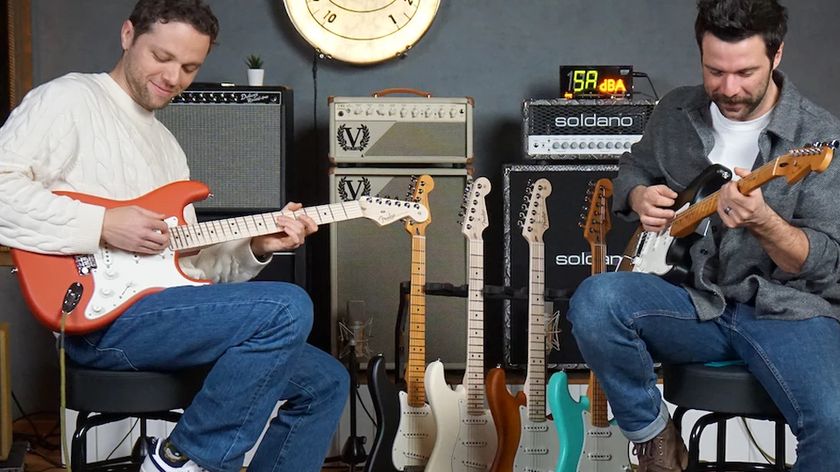
“Satin Stratocaster dreams”: Fender and Thomann have produced two new exclusive Stratocaster lines – and their prices rival existing US and Mexico-made models
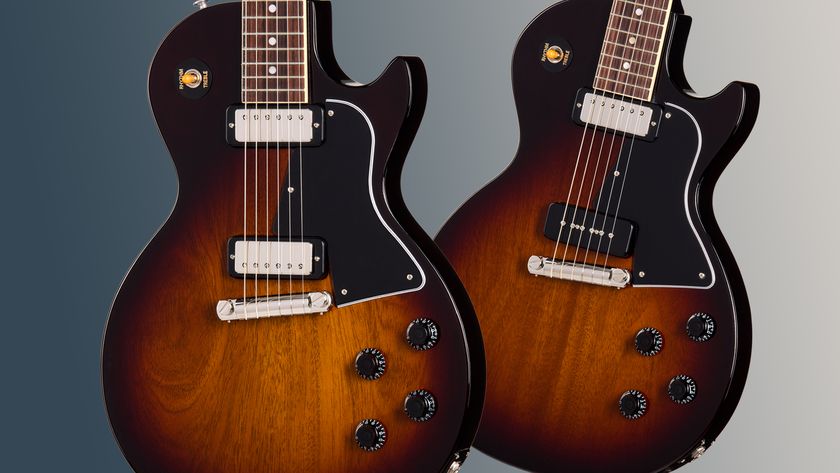
“A new take on the classic”: Gibson gives its Les Paul Special an ultra-rare pickup overhaul with new Mini Humbucker models




